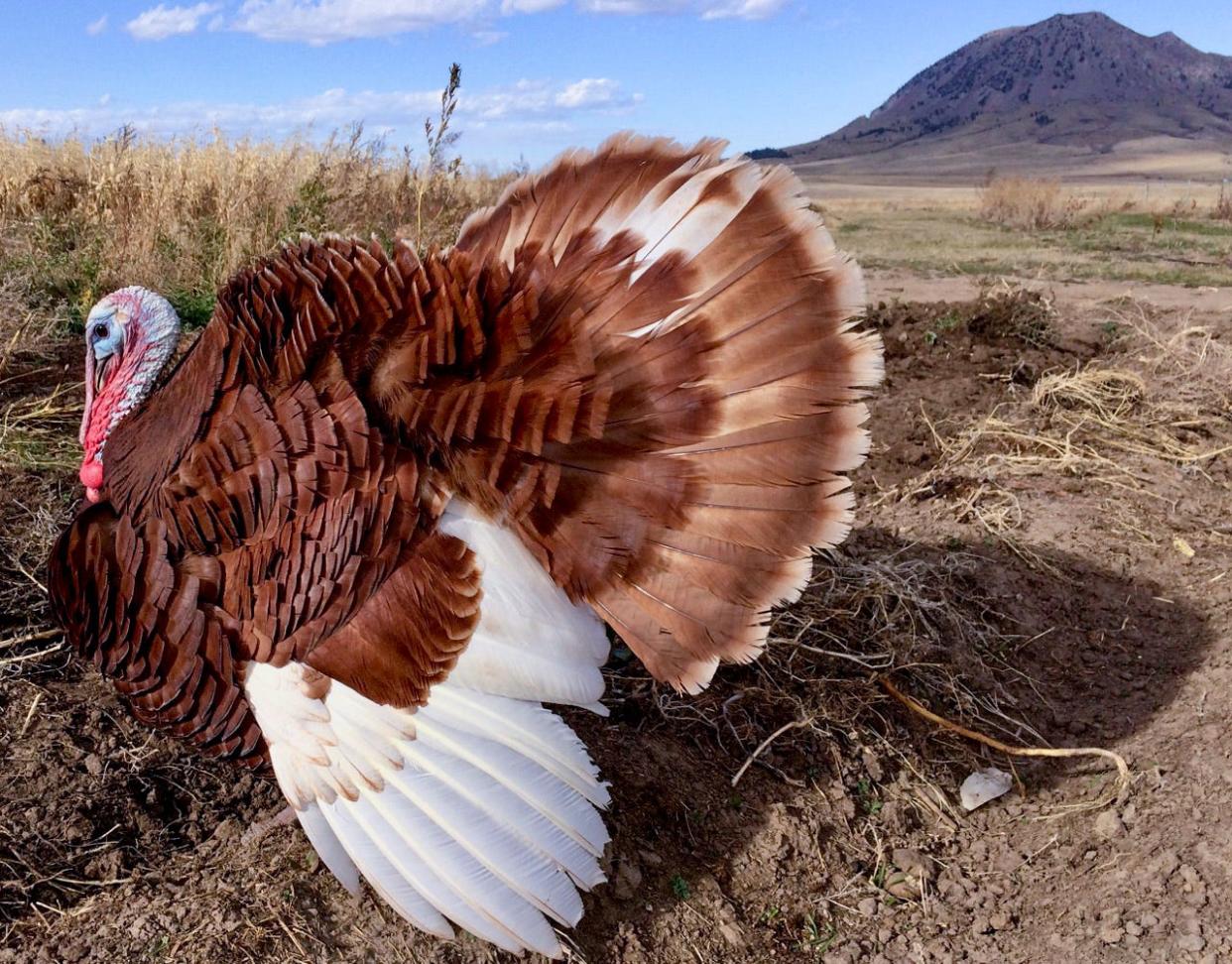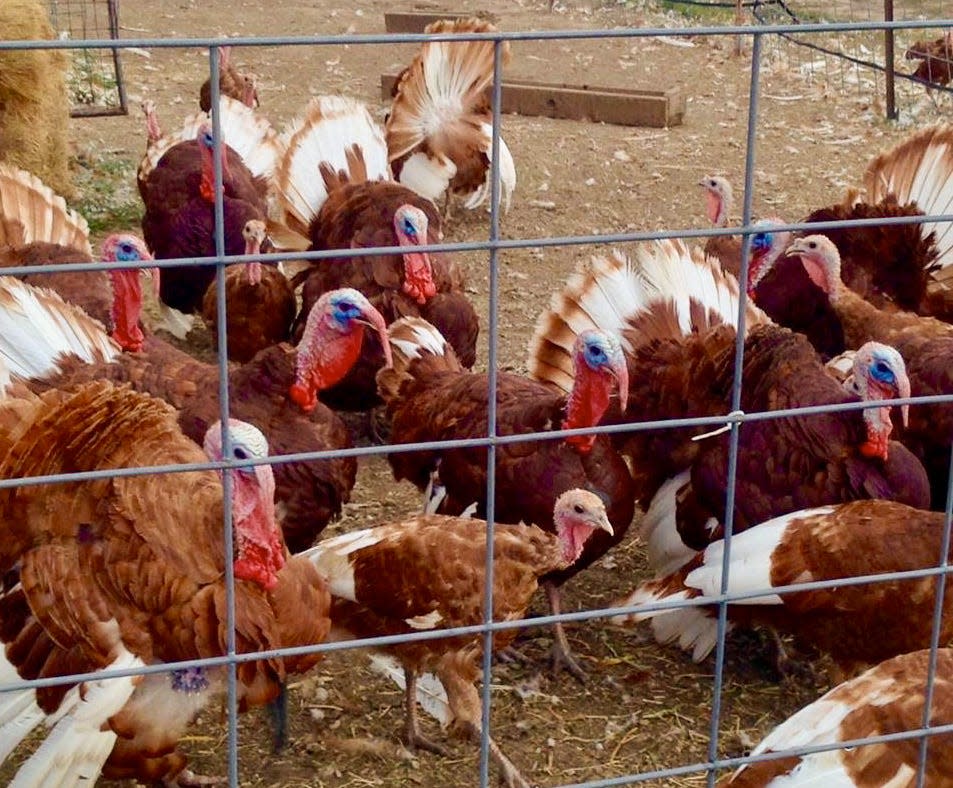Demand remains high for 'heritage turkeys' grown in South Dakota

STURGIS, S.D. – During the COVID-19 pandemic, disruptions in the food production supply chain and workforce sometimes led to empty grocery shelves, pushing some consumers to turn to locally grown organic meats and produce.
That trend included heightened interest in so-called heritage turkeys, ancient breeds of the big birds that were common in the early days of the United States but which dropped from consumer consciousness as producers turned toward the plump, big-breasted turkeys that are grown en masse and will appear on millions of American dining tables this Thanksgiving.
While the pandemic spike has leveled off, a number of people in South Dakota remain highly interested in eschewing the cheaper, bigger white turkeys sold at chain grocery stores in favor of the smaller heritage birds grown and sold on a handful of Rushmore State organic farms.

"We saw a big surge during COVID, but there's still an interest and a growing interest in our turkeys," said Michelle Grosek, who runs Bear Butte Gardens organic farm near Sturgis with her husband, Rick. "Some people went back to old ways of eating, but a percentage has decided to stick with buying locally grown products."
The Groseks raise Bourbon Red heritage turkeys, which not only make great table fare but are outstanding at keeping down grasshopper populations on the farm located west of state Highway 79 just north of Sturgis.
Many visitors to the farm across the highway from Bear Butte State Park seek a closer connection to how their food is raised. And they're willing to pay more for a turkey that is locally grown in free-range conditions on farms without giant warehouses where birds are raised by the thousands and never leave until being trucked to processing plants.
"It's a good market for us and growing all the time as there is more awareness of how your standard turkey or chicken is grown in a CAFO (concentrated animal feeding operation)," Michelle Grosek told News Watch.
In the run-up to Thanksgiving 2023, Grosek said she is butchering 10 of her own Bourbon Red turkeys and another 10 from another area farm. They range in finished weight from 10 to 17 pounds and are priced at $8 a pound, she said.
Grosek said she and her husband saw a jump in interest in their Bourbon Reds following a 2020 version of this News Watch story highlighting the increased interest in heritage turkeys. She not only heard from consumers interested in buying birds to eat but from other small producers looking for breeding stock to expand their flocks of Bourbon Beds.
"It was like a nice new community developed around that article, and I did not foresee that," she said.
Known collectively as “heritage turkeys,” many of the ancient breeds almost went extinct in the late 1990s. But those colorful, playful and spritely bird breeds are on the rebound as a small group of niche farmers in South Dakota and beyond are once again breeding, raising and selling heritage turkeys as part of a growing farm-to-table agricultural movement.
The story of how heritage turkey breeds almost disappeared, how a genetically modified bird that cannot reproduce on its own became the nation’s preferred table fare, and how a few farmers are fostering the re-emergence of the ancient breeds is a tale that sheds light on how modern agriculture has used science and selective breeding to increase production and profits. Yet it is also a story about how some farmers are taking on the task of preserving the ancient breeds to meet an increasing demand by some consumers to know more about what they eat and how it is raised.
Breeding stock of heritage turkeys such as Auburn, Buff, Black, Bourbon Red, Narragansett, Royal Palm, Slate, Standard Bronze and Midget White totaled just 1,335 in 1997, according to a census taken by The Livestock Conservancy of Pittsboro, North Carolina.
Conservancy program manager Jeannette Beranger said in fall 2020 that the alarming decrease in birds sparked efforts to preserve heritage breed turkeys, whose total had climbed to 14,000 by 2016, the year the last census was taken. Specific breeds like Black turkeys remain rare; Chocolate turkeys have vanished.
The concern now is whether a new generation of farmers dedicated to preserving heritage breeds will step forward to replace those now retiring.
“Some of the old timers, the big-scale producers, have bowed out. The red flag is going up once again for (heritage) turkeys like in the ‘90s,” Beranger said. “We need more people breeding these birds.”
Only a handful of South Dakota producers raise heritage breed turkeys to sell. They do it out of a desire for preservation, to tap into a growing base of highly selective consumers, a preference for sustainable agriculture or because the heritage breeds are known for higher fat content and greater juiciness than the mass-produced birds.
The vast majority of the more than 200 million turkeys that Americans consume annually descend from a single breed — the Broad-Breasted White, a far different creature from turkeys of old.
Modern Broad Breasted White turkeys reach market weight in 14 to 18 weeks, compared with 28 weeks for other breeds. In heritage breeds, the extra weeks allow for more skeletal development and greater fat production, affecting juiciness and flavor.
Raised in large indoor pens, today’s commercial turkeys cannot defend themselves from predators, rear their young or reproduce without artificial insemination. They are too top-heavy to mate without assistance, with up to 70 percent of the bird’s weight concentrated in the oversized breast. They have weaker immune systems.
South Dakota is a significant producer of Broad Breasted Whites, with about 5 million turkeys raised annually almost exclusively in concentrated animal feeding operations runs by Hutterite colonies in East River. The Hutterite-owned Dakota Provisions turkey plant in Huron processes about 200 million pounds of turkeys a year and makes up a significant portion of the state’s $300 million annual poultry industry.
— This article was produced by South Dakota News Watch, a non-profit journalism organization located online at sdnewswatch.org.
This article originally appeared on Sioux Falls Argus Leader: Demand remains high for 'heritage turkeys' grown in South Dakota

